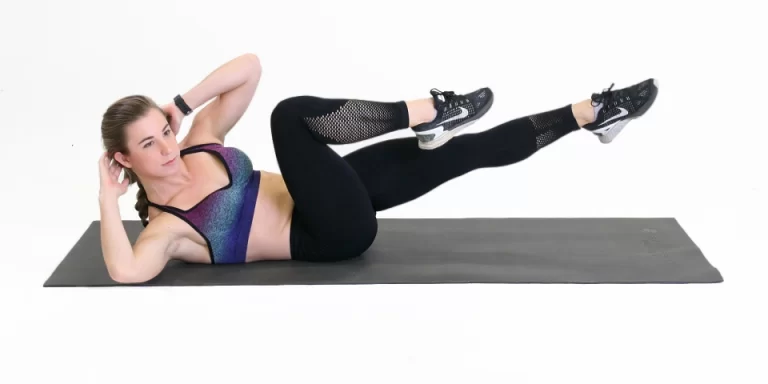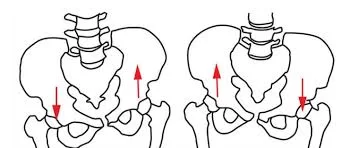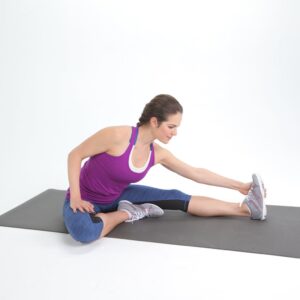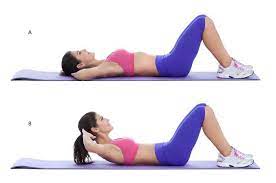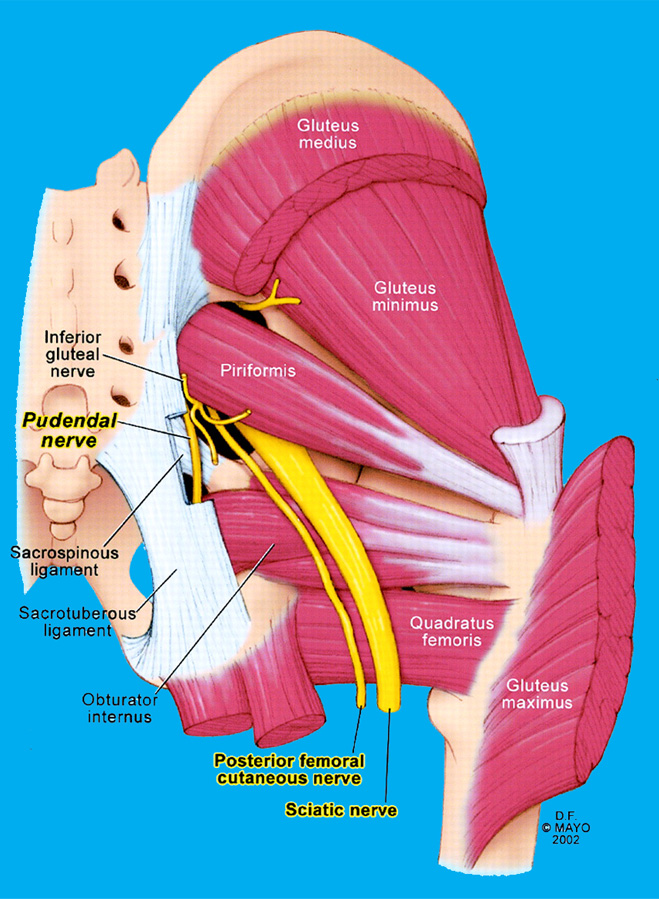Teres muscles strengthening exercises
Table of Contents
What is teres muscle strengthening exercises?
- The teres major plays the main role in moving the arms as well as shoulders. Teres muscle strengthening exercises can also add width to the much-desired “V look. The teres minor is the of the teres muscles & it assists to stabilize the ball as well as the socket glenohumeral joint & supports lateral or external rotation of the arm at the shoulder joint. This is vital to strengthen the teres major & teres minor muscles to prevent potential shoulder pain.
- Unbeknownst to many, the culprits causing this pain might be the teres major or even the teres minor. This is about times you know their names.
What is the difference between the teres major and teres minor?
- Both of these teres muscles have different actions in the human body. It is due to where they are based on the humerus. The teres major muscle shares a common insertion with a latissimus dorsi on the anterior side of the humerus. The teres minor is based on the tuberosity (where muscles & connective tissues attach) of the humerus head.
What is the teres major muscle?
- Teres name is derived from a Latin word. This means “rounded” & major being the bigger of the two teres muscles. This muscle is situated above the latissimus dorsi. The teres major muscle touches the humerus as well as the scapula. Many people think that the teres major is part of the rotator cuff muscle but this is not as it does not attach to the capsule of the shoulder joint. The teres major is also called sometimes the lats little helper.
What is the teres major action?
- The teres major work in a medial rotation of the humerus (upper arm) by pulling an anterior surface of the humerus towards the torso.
- This also assists to straighten the arm from the flexed position. The teres major is sometimes referred to as the climbing muscle as this works in unison with the pectoralis major (pecs) & latissimus dorsi(lats) muscles to pull the torso via adduction when its humeral attachment is fixed. Teres major also supports as well as helps to stabilize the longissimus dorsi, especially in wood-chopping movements.
- The teres major action plays a vital role in many arm swinging movements.
What is the teres minor muscle?
- It is the smaller muscle that comprises the rotator cuff muscles, a teres minor is situated below the infraspinatus & above the teres major as well as next to the triceps brachii.
What is the teres minor action?
- The teres minor & the infraspinatus work in conjunction to hold the humeral head in the glenoid cavity of the scapula. Apart from it, the teres minor action assists to stabilize the shoulder supports external rotation of the shoulder & aids in the adduction and extension of the shoulder as well.
Health benefits of Teres major as well as teres minor Strengthening Exercises
- The function of this space is to provide a passageway for the axillary nerve & posterior circumflex humeral artery, from the anterior to posterior shoulder regions
- Helps to stabilize the shoulder joint.
- Helps to support lateral or even external rotation of the arm at the shoulder joint.
- This is vital to strengthen the teres major as well as teres minor muscles to prevent potential shoulder pain.
- Helps to provide stability to the shoulder joint.
- Helps to increase the range of motion(ROM) of the shoulder joint, so the patient may do the daily activities & athletic work with more ease.
- This will increase the external rotation range of the shoulder joint more specifically.
- This increases good blood circulation near the shoulder joint.
- This also supports the scapula to do motion.
Different Types of Teres major & Teres minor Strengthening Exercises
Dumbbell Pullover
- How to do this strengthening exercise: To do this exercise the patient has to Lie across the bench or even a table with only the upper back & neck being supported by the bench.
- Grab the dumbbell in each hand, forming the triangle with the hands or by holding the inner plate.
- Grab the dumbbell directly above the chest with elbows slightly flexed.
- Contract the core muscle & slowly lower the dumbbell past the face as well as over the head as much as you can
- Pull the dumbbell back over the face to the initial position.
- Do 2 to 3 sets of 10 to 12 repetitions in one session. Do two sessions per day.
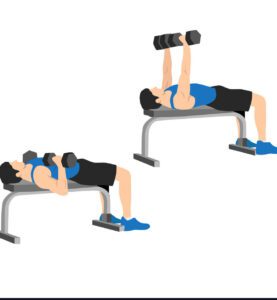
Cable Straight Arm Pull Down
- How to do this strengthening exercise: Attach a wide grip handle or even another accessory above the head to the cable machine hold the handle with an overhand grip with both hands at shoulder width Hinge forward slightly at the hips & with the elbows slightly bent pull down on the handle by depressing the shoulder blades.
- While extending the shoulders Pull down until the handle is touched to the thighs Slowly come back to the starting position.
- Do 2 to 3 sets of 10 to 20 repetitions in a session. Do three sessions per day.
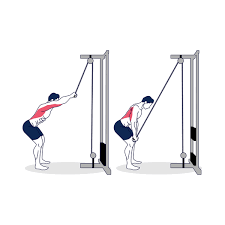
Inverted Row
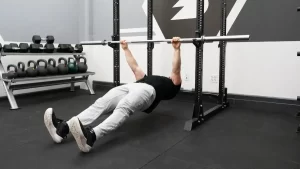
- How to do this strengthening exercise: Set up the barbell slightly higher than the arm’s length above the ground, the patient has to Sit under the barbell with the legs stretched out in front of you.
- Reach up grabbing the bar with both hands using the overhand grip wider than shoulder-width apart.
- Straighten the body so the arms are straight and heels are on the ground Pull up by retracting the shoulder blades until the chest hits the barbell Slowly lower to the starting position.
- Do 2 to 3 sets of 10 to 20 repetitions in one session. Do around two sessions per day.
Underhand Yates Row
- How to do this: First of all, hold the barbell with each hand using the underhand grip at shoulder width Bend forward from the torso & the knees as well as hip hinge forward at 45 degrees.
- The arms should be almost fully extended with the bar over the thighs.
- Pull the barbell up to the waist Briefly pause at the top then slowly come back to the initial position.
- Do 2 to 3 sets of 10 to 20 repetitions in a session in a day.
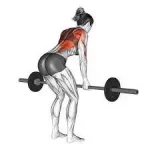
Underhand Grip Lat Pull down
- How to do this strengthening exercise: To perform this exercise a patient has to Sit on the bench facing the cable machine.
- Reach up & hold the bar in each hand using the underhand grip, shoulder width apart.
- Pull down on a bar by bringing the shoulder blades down & back until the bar reaches the chest Slowly come back to the starting position.
Lat Pull Downs
- How to do this strengthening exercise:
- To do this exercise a patient has to Sit on the bench facing the cable machine Reach up & hold the bar with each hand using an overhand grip, hands a little wider than shoulder-width apart.
- Pull down on a bar by bringing the shoulder blades down as well as backward until the barbell reaches the chest.
- Slowly come back to the initial position.
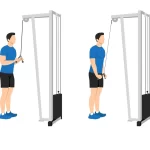
Pull Ups
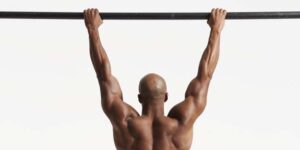
- How to do this exercise: To start with, hold the bar, hands shoulder-width apart using the overhand grip.
- Embark with arms completely straight & pull the chest up toward the bar as much as you can.
- Hold briefly at the top then return to the embarking position.
Chin Ups
- How to do this strengthening exercise:
- Hold the barbell, hands shoulder-width apart palms with the underhand grip start with arms completely straight & pull the chest up to the barbell as you can Hold briefly at the top then return to the initial position.
- Do 12 to 15 chin-ups, and move to multiple sets with 10 repetitions in each set in a session. Perform three sessions per day.
Single Arm Dumbbell Row
- How to do this strengthening exercise: To perform this exercise a patient has to hold the dumbbell with a neutral grip with the left hand and then place the left knee & left hand under the shoulder on a bench. Grab the dumbbell with the right arm straight directly under the right shoulder.
- Pull the dumbbell towards the ceiling, elbow slightly flexed & keeping the arm close to the body until the dumbbell is next to the hip
- Slowly lower the weight to the starting position.
- Do 5 to 10 repetitions for 3 to 4 sets with both arms in one session. Do three sessions per day.
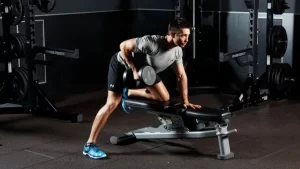
Seated Cable Rows
- How to perform: To do this exercise a patient has to Sit on the bench with the knees flexed then reach forward & hold the triangle handle Pull the handle back towards the navel keeping the back straight as well as squeezing the shoulder blades together Slowly return to the starting position.
- Do 6 to 10 repetitions for 2 to 4 sets in one session. Do three sessions per day.
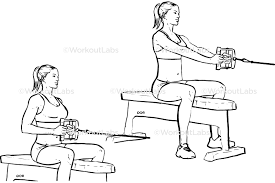
High Cable Reverse Crossover Fly
- How to do this strengthening exercise: Begin this exercise with both handles at head height on the cable machine. After that, Stand facing the center of the two-pulley machine.
- Reach up & across the body with both hands holding the handles with the overhand grip (or grab the cables).
- Pull the elbows down, out & back as much as possible until the arms are in line with the back.
- Slowly come back to the initial position.
- Repeat it for 10 to 15 repetitions for 2 to 3 sets.
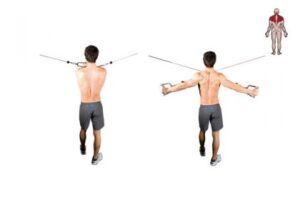
Cable Supine Reverse Fly
- How to do this strengthening exercise: Begin this exercise with the bench in the center of two pulleys.
- Reach up across the body grabbing both handles(cable) with the overhand grip.
- To perform this exercise Lie down on the bench with the hands crossed above the chest with the elbows slightly flexed.
- Pull the arms down to the sides until the elbow is parallel with the shoulders, the arms should be perpendicular to the trunk.
- Slowly come back to the initial position.
- Repeat this exercise for 10 to 15 repetitions for 2 to 3 sets in one session. Do two sessions per day.
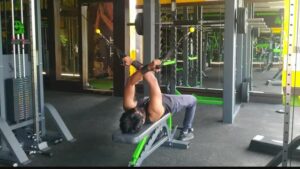
Dumbbell reverse Fly
- How to do this strengthening exercise: Hold the dumbbells with both hands with a neutral grip Then hinge at the hips until the body is almost parallel to the ground.
- Begin with the arms hanging down from the shoulders and pull the weight up & back until the elbows are parallel with the shoulders
- Slowly lower to the starting position.
- Repeat this exercise for 10 to 15 repetitions for 2 to 3 sets.

Band Pull Aparts
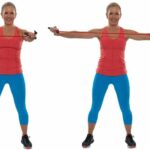
- How to do this strengthening exercise: To perform this exercise a patient has to Stand upright with feet shoulder-width apart
- Hold the resistance band close to the ends with the overhand grip
- Elevate arms out in front of you at shoulder height, Pull the band apart by squeezing the shoulder blades together.
- Slowly come back to the embarking position
- Repeat for 15 to 25 numbers repetitions for 2 to 3 sets in one session. Do three sessions per day.
Face Pulls
- How to do this exercise: Set the cable at head height and hold the handles or even rope with the overhand grip.
- Keep the elbows below the shoulders and pull back until the hands are parallel to the face.
- Slowly return to the initial position.
- Do 2 to 4 sets of 12 to 15 repetitions in a day.
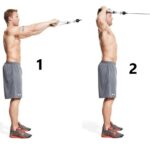
When did you not do this exercise?
- If the doctor advised you to take rest.
- If a patient feels any pain or even discomfort while this exercise then stop immediately & consult the physical therapist.
- If the arm bone is recently fractured.
- If the muscle is recently injured.
FAQ
Sit in a chair with your feet flat on the floor. Squeeze the shoulder blades together & pull the band to the chest during bending the elbows. Come back to the starting position slowly & release the shoulder blades. Repeat the exercise eight to 12 times.
The main function of teres major is to produce the motions of the humerus at the glenohumeral joint; this pulls the anterior surface of the humerus medially towards the trunk (internal rotation). Moreover, this can extend the arm from the flexed position.
The rotator cuff muscle tendons, including the teres minor tendon, can be inflamed or even irritated in a condition called tendinitis. In general, tendinitis is usually the exertional injury caused by repetitive use; rotator cuff tendinitis is caused by repetitive use of the arm, often in overhead activities.
The Patte test is the only test that allowed us to analyze the muscular strength of the teres minor in case of deficient infraspinatus. (A) The external rotation lag sign is performed with the patient seated with the elbow flexed to 90° and the shoulder elevated to 20° in the scapular plane.
Overuse of the Teres Major may cause the muscle to become tight, resulting in increased upwards rotation for the scapula. It can cause impingement & discomfort in the shoulder. Massage balls & trigger point therapy can help to release some of the tightness built up in the Teres Major from its overuse.

